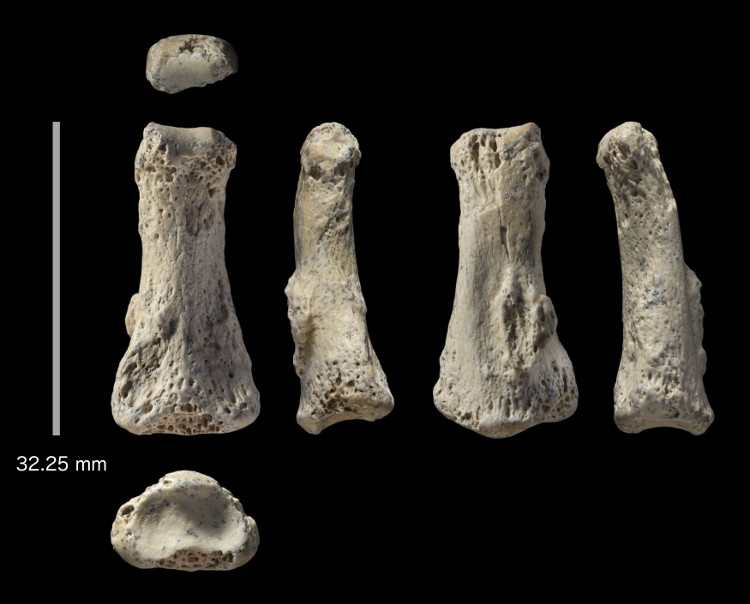The oldest fossil bone human excavated outside Africa
3.2cm human finger bone tissue with 85,000 date changes the perception of researchers about when people left Africa.
The 85,000-year fossilized human finger bone fragment found in the Saudi desert shows that early humans migrated from Africa on a completely different route from previous speculation, according to a study published Wednesday. in Nature Ecology & Evolution, Live Science reports. This discovery is the oldest human fossil bone outside Africa and Levant, the area surrounding the eastern Mediterranean (including Israel) and the largest human remains in Saudi Arabia.

85,000-year fossil bone tissue of 3.2cm length.(Photo: Ian Cartwright).
Previously, many scientists believed that people originally left Africa about 60,000 years ago and then settled in coastal areas, relying on marine resources, according to researcher Michael Petraglia, an archaeologist at Max Planck Humanities History Institute in Jena, Germany."But now, with the fossil finger bone from the Al Wusta site in Saudi Arabia, dating from about 85,000 to 90,000 years, we think Homo sapiens leave Africa earlier , " Petraglia said.
Iyad Zalmout, research co-author, paleontologist at Saudi Arabia's Geological Survey, found a 3.2cm long piece of finger bone in the Nefud desert in 2016. Homo sapiens, according to research leader Huw Groucutt, archaeologist at Oxford University, England. This is because humans have longer and slender fingers than Neanderthals also live at the same time. However, the research team still asked colleagues to conduct a computerized tomography (CT) to make sure.
After comparing a new fossilized CT scan with several other species with human-like fingers, including orangutans, Old World monkeys, Australopithecus afarensis, Australopithecus sediba and Neanderthal, the team identified it as human remains. , most likely the middle part of the middle finger."All research is consistent with the fingers of Homo sapiens. Homo sapiens' finger bone shape is quite unique compared to other species," Groucutt said.
Finger bones belong to adults, but it is unclear whether men or women. Fingers become fossils due to mineralization and stored in arid environments for thousands of years, certainly without any DNA remaining, Groucutt said.
Currently, Al Wusta is desert, but about 85,000 years ago, there is a freshwater lake attracting many animals, including hippopotamus, Pelorovis (extinct wild buffalo) and Kobus (African antelope). ). The team found the stone tool crafted by humans there.
The reason for African animals living in Saudi Arabia at the time could be the rainy season, turning the area into semi-arid grassland intermingling with lakes and rivers, attracting animals from sub-Saharan Africa to Saudi Arabia."And of course, the hunting and gathering community will follow these animals," Petraglia said.
- Discover the oldest fossil of mankind
- The oldest leg bone in England
- Video: Discover the oldest modern fossil outside Africa
- Discover the world's oldest fossil skin in South Africa
- Discovered fossilized bones migrating from Africa to Europe
- Bone fossils 160,000 years explain the genetic variant of humans
- 13 million year fossils of human ancestors
- Discover the oldest fossil fossil in Tibet
- Discover the oldest solid fossil
- Found a human stone tool 2.1 million years ago
- South Africa: discover the oldest fossil fish bones in the world
- Discover the oldest scorpion fossil
 Discovered an ancient centipede fossil 99 million years old
Discovered an ancient centipede fossil 99 million years old Discovered bat-like dinosaurs in China
Discovered bat-like dinosaurs in China Discovered a 200-year-old bronze cannon of the coast
Discovered a 200-year-old bronze cannon of the coast Discover 305 million-year-old spider fossils
Discover 305 million-year-old spider fossils